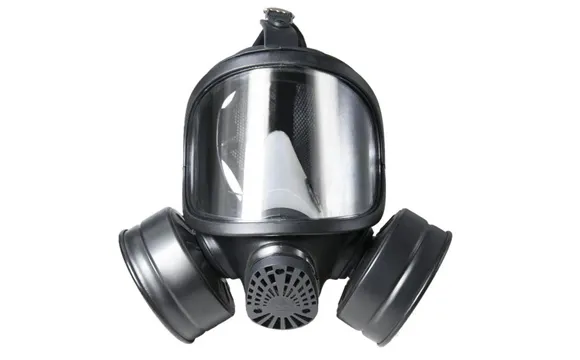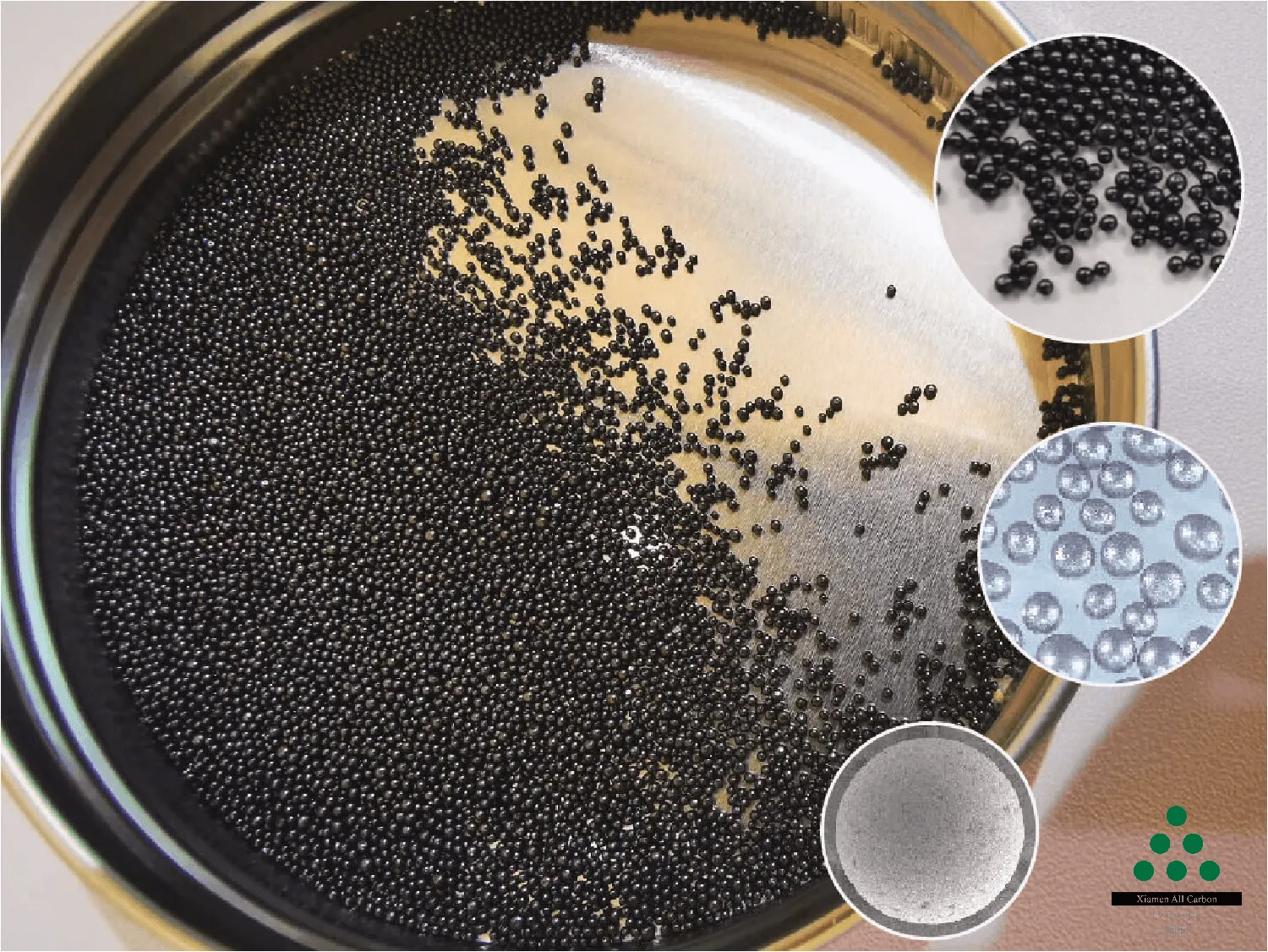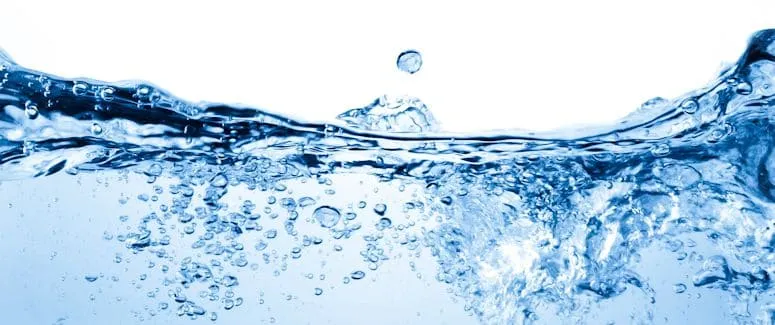Spherical activated carbon has many good properties, such as less impurities, low ash content, high strength, easy control of pore size distribution, large surface area, good adsorption performance, high spherical degree, smooth surface, good rolling ability, uniform filling density, and small fluid resistance to gas or liquid. It is an ideal adsorbent.
1. Classification of the spherical activated carbon
According to the different raw materials, spherical activated carbon can be divided into three categories: asphalt, coal and polymer based spherical activated carbon.
1.1 Asphalt-based spherical activated carbon
Asphalt-based spherical activated carbon can be classified into two categories: coal asphalt-based and petroleum asphalt-based spherical activated carbon. Starting in the late 1980s, it gradually entered the industrialization phase and found extensive applications in various fields.
The advantages of asphalt-based spherical activated carbon are notable. It boasts high strength, low impurity content, excellent sphericity, smooth surface, impressive adsorption performance, access to abundant raw materials, and affordability.
However, there are some drawbacks to consider. The preparation process and equipment required for asphalt-based spherical activated carbon are complex. In practical production, the commonly used gas phase oxidation treatment is time-consuming, energy-intensive, and results in low output. Alternatively, the use of liquid phase oxidation treatment necessitates thorough cleaning of the obtained asphalt balls, generating a substantial amount of waste liquid that can potentially cause severe pollution. These limitations pose challenges to the production of asphalt-based spherical activated carbon.
1.2 Coal-based spherical activated carbon
The coal-based spherical activated carbon developed in the late 1970s has a relatively mature process and is mostly used in the biochemical field. The production process adopts the disk rolling ball making method, and the manufacturing equipment and process are relatively simple.
Coal-based spherical activated carbon is characterized by its low cost, but it does have certain drawbacks. These include a relatively high ash content, poor strength, low sphericity, and subpar adsorption performance. The production of high-quality coal-based spherical activated carbon necessitates stringent requirements for the raw coal, such as low ash content, high activity, and potentially other specific criteria.
1.3 Polymer-based spherical activated carbon
The preparation of spherical activated carbon with synthetic polymer materials can avoid various disadvantages of asphalt-based and coal-based spherical carbon. At present, there are two main types of synthetic polymer based spherical activated carbon: one is phenolic resin based spherical activated carbon, the other is ion resin based spherical activated carbon. These polymeric materials have high carbon content and low ash content, with better compressive strength compared with other raw materials.
- Phenolic resin-based spherical activated carbon
Curing agent and pore forming additive are added in the preparation process of phenolic resin-based spherical activated carbon, so it has the advantages of simple process, low cost and easy control of pore size distribution.
In the early 1980s, spherical activated carbon can be made with ion resin as the precursor through carbonization and activation processes.
Since the 1990s, scientists have proposed to use different polymer materials for synthesis, and then without melting and carbonization treatment can get spherical activated carbon. This synthetic spherical activated carbon has the characteristics of high strength, no impurities and high catalytic activity.
2. Application of spherical activated carbon
2.1 Catalyst carrier
* Raw materials controllable, stable performance, low variability.
* The pore volume can be designed and customized for different catalysts.
* With high strength and low ash content, the catalyst can maintain good activity and have good defiltration effect.
Application: Hydrogenation reduction process: petrochemical industry, pharmaceutical industry, fragrance industry, dye industry and other fine chemicals.
2.2 Energy storage (electrode material of super-capacitors)
Resin based spherical activated carbon facilitates the flow of electrolyte and the infiltration of electrolyte into the electrode, which makes it easier to form a electronic double layer, thus increasing the specific capacitance of the capacitor; its high tap density makes the capacitor easy to obtain a relatively high volumetric energy density; it has developed pore structure and well chemical stability.
2.3 Pharmaceutical
2.3.1 Spherical activated carbon for oral medicine
(represented by KREMEZIN for kidney disease, oral anti-diabetic drugs)
Features:
* SP series spherical activated carbon has stable structure, good biological affinity, non-toxic and harmless to organisms;
* Spherical carbon can be used as a carrier of biological drugs to transport drugs in the human body, release drugs after reaching the affected area, shorten the residence time of drugs in the human body, so as to reduce the toxic and side effects of drugs on the human body and reduce the amount of drugs.
* Spherical activated carbon has good curative effect, low side effects, does not absorb digestive enzymes after oral administration, and is not absorbed by the gastrointestinal tract.
ACarbon® SP series Spherical Activated Carbon
| Series | BET Surface area | Pore volume | Creatinine adsorption rate | Pentobarbital sodium adsorption rate | VB12 adsorption rate |
| SP | 1000-1400m2/g | 0.9-1.2cm3/g | >86% | >80% | >65% |
2.3.2 Blood purification (hemoperfusion device)
* Physical adsorption, good safety performance, no secondary solvent-based pollution, can avoid complications.
* The pore volume can be customized for specific adsorption of toxins.
* Single grain bearing capacity >20N, extremely high hardness, effectively avoid the loss of carbon dust.
* Uniform filling density, low resistance to fluid, smooth surface does not scratch blood cells.
2.4 Personal protective clothing, gas masks, gas tanks (confined space)
Spherical activated carbon has uniform distribution, strong wear resistance, strong adsorption capacity. The pore volume and diameter can be customized.
The chemical protective clothing made of spherical activated carbon is light in weight, good in air permeability, low in water vapor resistance and good in dynamic protection against chemical warfare agents, and can also provide good comfort.
Compared with clothing based on powdered activated carbon, protective clothing based on spherical activated carbon can be used after multiple laundry.
The protective clothing based on spherical activated carbon can overcome the shortcomings of brittle, fragile and limited filling amount made by carbon fiber fabric.
ACarbon® SP series Spherical Activated Carbon
| Series | Moisture | Particle size | Weight of the filter cartridge | Iodine number | Benzene protection time |
| SP | 1.2% | 0.5 mm | 93g | 1301mg/g | 130.9 min |
2.5 Polysilicon production
SP series resin-based spherical activated carbon has high purity, high strength, high abrasion resistance, low dust and very low impurity content, so resin-based spherical carbon is widely used in the production process of high-purity polysilicon to adsorb impurity compounds, thus producing polysilicon with stable quality.
2.6 Adsorb of heavy metal ions
Textiles, mining, tanning, electroplating and petrochemical industries produce waste containing mercury Hg(Ⅱ), chromium Cr(Ⅵ), cadmium Cd(Ⅱ), arsenic As(Ⅴ) and lead Pb(Ⅱ) and other heavy metals, these heavy metals have a serious impact on human health, including animals and crops. SP spherical activated carbon showed good adsorption performance for heavy metal ions.
2.7 Remove the organic dyes
Dyes are organic compounds that are resistant to light, water and antioxidants. As a result, dyes are difficult to degrade after release into the aquatic system. For the adsorption process using spherical activated carbon to remove dyes, the surface chemistry of the adsorbent plays an important role.
2.8 Gas adsorption and storage (carbon capture)
Capturing CO2 from different sources, such as thermal power plants, has been identified as a good way to reduce the amount of CO2 present in the atmosphere. Because spherical activated carbon is hydrophobic and stable under humid conditions, the use of spherical activated carbon is an important method for the adsorption and storage of CO2, H2 and CH4.
2.9 Industrial ultra-pure water filtration
SP series resin-based spherical carbon with high purity, high strength, high wear resistance, does not use adhesive, produce less carbon dust, so resin-based spherical carbon is widely used in monocrystalline silicon or polysilicon, silicon wafer cutting, solar cells, semiconductor material process and biomedical pure water, ultra-pure water production.

